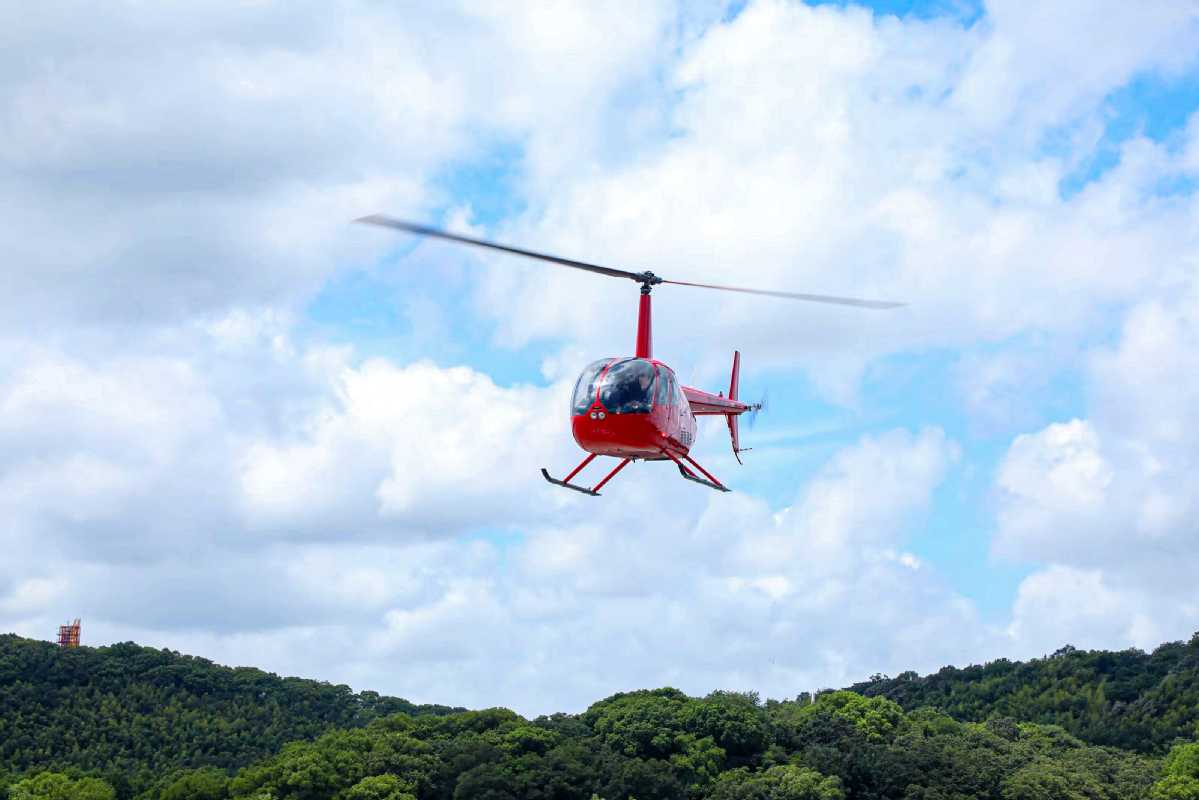

Over 30 leading companies in China's low-altitude mobility sector gathered at Shanghai Yuehu Sculpture Park on July 20–21, demonstrating more than 100 types of drone applications across sectors including forest inspection, firefighting, logistics, supply transportation, and water rescue.
The show opened with an aerial floral performance by Funtastic, a Shanghai-based company specializing in aviation technology and cultural innovation. A drone showered the audience with dried rose petals, creating a festive and engaging atmosphere.
Another hydrogen-powered drone designed for inspection impressed the audience with its extended airtime. Developed by Shanghai Jimei Propulsion Technology Co Ltd, an incubator based at the Tongji University National University Science Park, the hydrogen fuel cell UAV features high efficiency, low noise, a wide operating temperature range, and zero emissions.
"The highly integrated modular fuel cell system offers high energy density, lightweight design, efficient conversion, fast refueling, and a long lifespan. Our internal tests show it can fly for nearly four hours at a speed of 50 kilometers per hour," said Song Ke, founder of Jimei Propulsion and associate professor at the School of Automotive Studies at Tongji University.
Song added that hydrogen fuel cells can outperform fossil fuels and lithium batteries in many ways, and he sees great potential in the wider application of this clean energy to boost the rapid growth of the promising low-altitude economy.
Vectoragr, a company headquartered in both Shanghai and Harbin, Heilongjiang province, showcased its self-developed VF80 firefighting drones at the event. Designed for firefighting, emergency rescue, and aerial support in urban areas, forests, and bodies of water, the drone comes in specialized editions tailored to different scenarios.

For example, its city edition is equipped with a fire hose and can ascend 100 meters in under one minute to conduct remote firefighting. It offers higher efficiency and safety than traditional equipment, operating with a 5-meter proximity range and a 15-meter suppression depth.
Its forest edition can deliver exceptional wildfire monitoring performance with high-resolution cameras, as well as remotely deploy fire suppression agents in multi channels, realize rapid aerial delivery of supplies and offer night illumination to support comprehensive firefighting.
"The nation's policy is boosting the development of the low-altitude economy, and we have seen many challenges and great demand in emergency rescue. We hope to support the firefighting tasks with drones and reduce the risks for our firefighters in dangerous scenes. The VF80 drones are already in application in many places, such as the provinces of Heilongjiang, Zhejiang, Jiangxi and Yunnan," said Zhou Zhenfei, product manager at the company's low-altitude economy department.
With the expanding application of drones in diverse sectors, the market demand for licensed drone pilots is also growing. Qin Song, general manager of Funtastic, said: "We see obvious growth in the number of our trainees pursuing their license in recent years, as the nation encourages the development of the low-altitude economy. Different drones and different application scenarios have different requirements for drone pilots."
He added that more teenagers are becoming interested in drone pilot training. Since drones are a form of intelligent robotics, the training can help enhance students’ abilities in areas such as theoretical knowledge, logic, mathematics, and physics.
Comprehensively showcasing practical applications in various fields, the event also warmed up for the upcoming International Advanced Air Mobility Expo, which will take place from July 23 to 26 in Shanghai.

